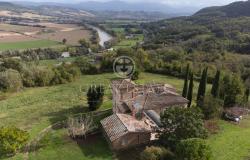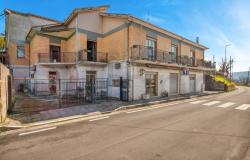Archaeologists said Monday they have discovered a vast Roman necropolis on a hill south of Rome where the lower social classes buried their dead.
Around 270 skeletons have been found in simple tombs at the Castel Malnone necropolis at Ponte Galeria along with ceramic tankards, oil lamps and what remains of ancient shoes.
Around 70 coins bearing the effigies of the Emperor Trajan (53-117) and Faustina the Elder (100-141), wife of Emperor Antoninus Pius, were found placed in the mouths of the dead as offerings for Underworld ferryman Charon.
Archaeologists and anthropologists working at the site discovered that some 70% of the skeletons belonged to adult men between the ages of 20 and 40, and that many had spinal fractures or other disabilities.
In light of this evidence, experts believe the men may have worked at the nearby salt mines, where they were accustomed to carrying heavy sacks of salt on their shoulders, or were involved in heavy construction work for the ports planned by the emperors Claudius and Trajan.
''Here the main point is not the recovery of works of art, but the possibility of learning about the daily life of a small sample of imperial citizens at the lowest social levels,'' said Rome archaeology superintendent Angelo Bottini.
''It allows us to connect historical testimony with concrete reality about how people lived in the capital during the empire's most splendid era and understand how a small marginal community organised itself when faced with death,'' he added.
Although most of the tombs contained only basic artefacts, the graves of two young boys led to more interesting finds.
One boy held a necklace made from bones, shells and an amber pendant to protect him in the afterlife, while another was buried with two gold earrings and a large ceramic oil lamp decorated with a scene from a grape harvest.
Archaeologists first began excavating the site following a tip-off from police in March last year, ''The art police had wondered about the existence of an archaeological site in the area after having discovered and reported two local people for possession of ancient artefacts,'' explained police chief Marco La Malfa.
Archaeologist Laura Cianfriglia explained that digs at the site had been long and difficult because graves were situated at various levels and sometimes presented as family groups.
''We're now working on a database where we will detail any further evidence,'' she said.










